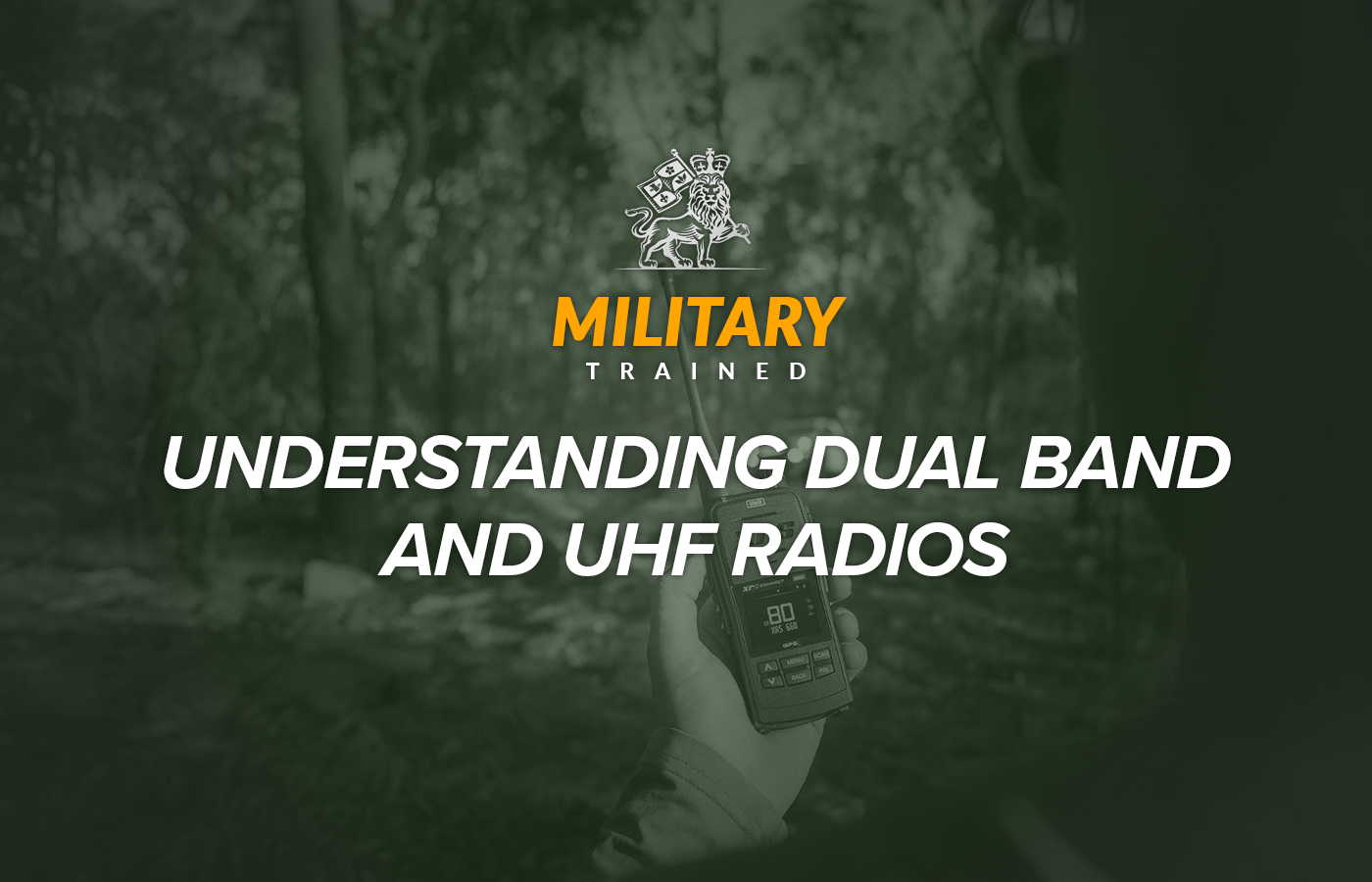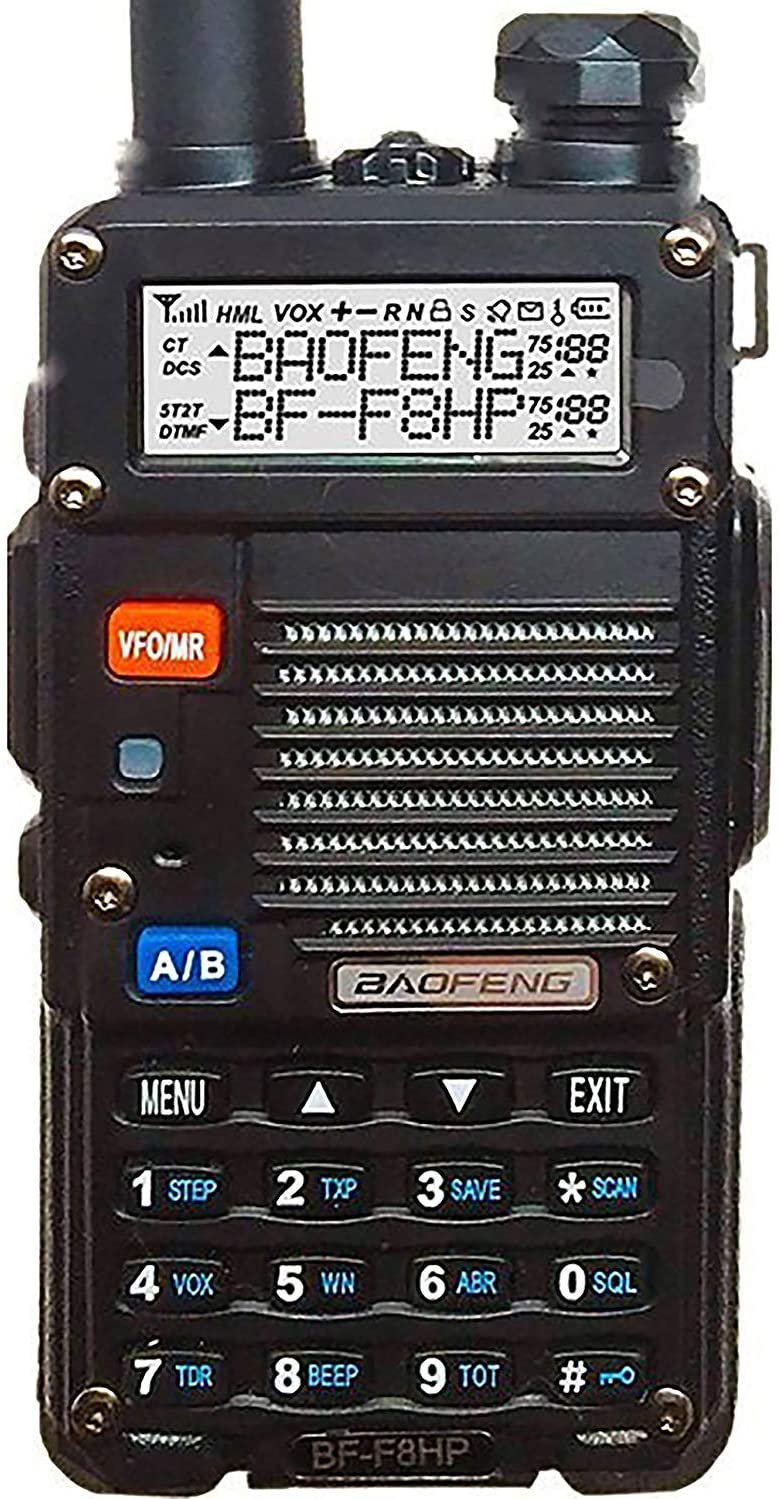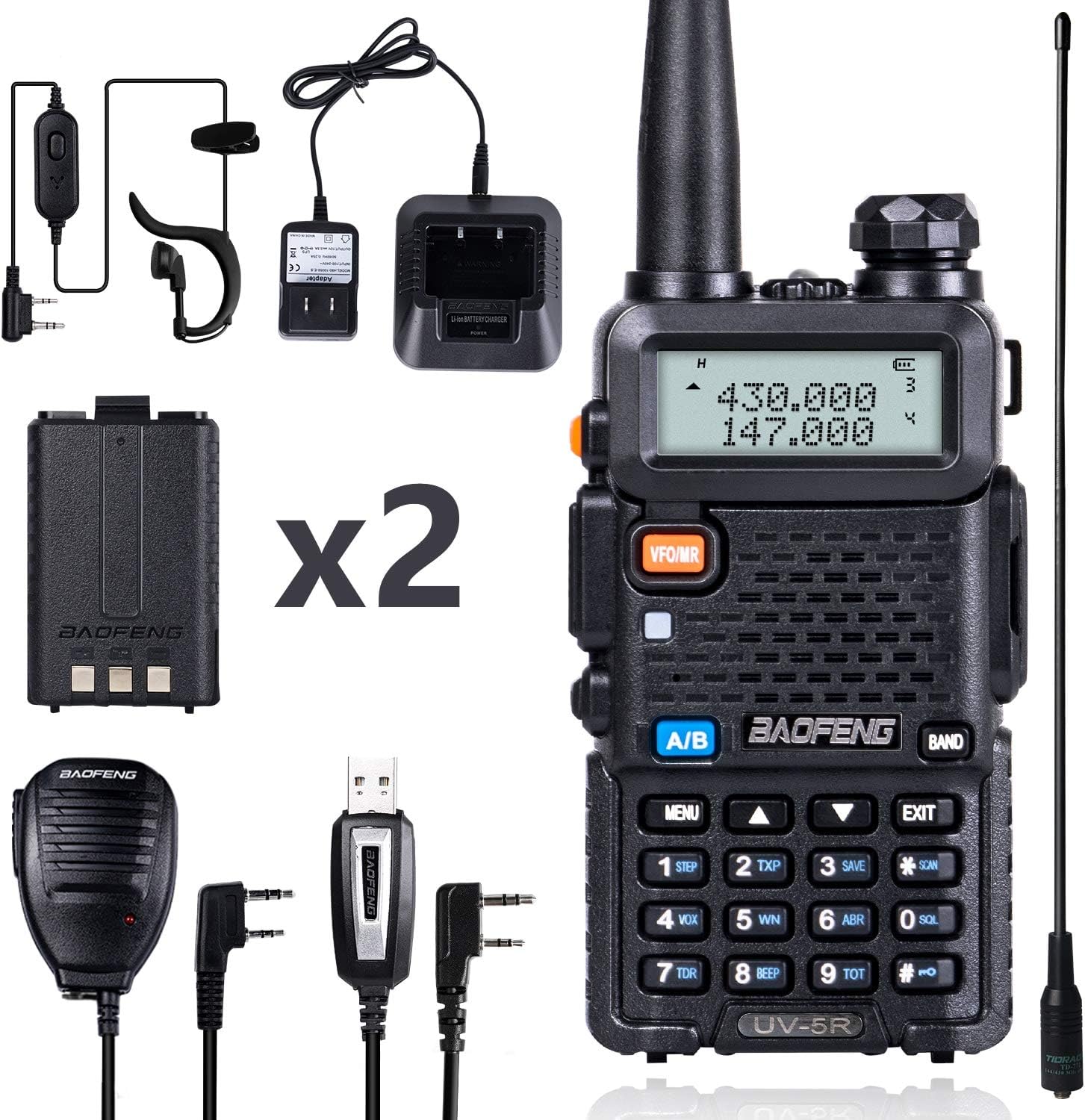
Whether you’ll be adventuring with a small group into the woods or embarking on a solo journey, it’s crucial to keep track of your location for safety and preparedness. Proper navigation can prevent potentially dangerous situations, ensuring you remain on course and can be located if necessary.
It’s essential to inform someone of your destination, the route you plan to take, and the number of days you intend to be on the trails. This information can be vital in case of an emergency, providing rescuers with a starting point for their search efforts. Additionally, having a detailed map, compass, and GPS device can enhance your ability to navigate the terrain confidently.
Using a two-way radio, which often requires extra training and, in some cases, additional governmental certifications, ensures stable, constant communication with your team or the nearest communication station.
Unlike cell phones, which depend on network coverage and battery life, two-way radios provide a reliable means of communication, especially in remote areas where cell service is nonexistent. This allows for immediate contact in case of an emergency, coordination with other group members, and receiving updates on weather conditions or other critical information.
Packing a two-way radio among your essentials eliminates the need to worry about maintaining a cell phone signal or carrying a power brick for recharging, thus enhancing your overall safety and communication capabilities during your adventure.
What is dual-band two-way radio used for?
The reality is that in life-threatening situations, particularly during disaster events, few technologies match the reliability and resilience of a dual-band two-way radio. During catastrophic natural disasters like hurricanes or earthquakes, where critical infrastructure is heavily compromised and power outages are inevitable, communication through radio signals becomes the primary means of coordinating rescue efforts and updating nearby communities.
In such scenarios, having a dual-band two-way radio can be the difference between life and death. Even if you don’t pack one for your camping trip, simply having one at home makes you more prepared than most in the event of another disaster. This preparedness can provide peace of mind, knowing that you have a reliable way to communicate when other systems fail.
Unlike cell phones, which depend on network coverage that can be disrupted, dual-band radios use radio signals that can cut through the chaos, ensuring you stay connected when it matters most.
Ideal Use of Two-Way Radios in Outdoor Scenarios
In an outdoor scenario, especially on a mission that will take more than a day to complete, carrying a two-way radio is ideal. If you are venturing into areas known for poor cell phone signals, having a radio as a backup ensures you can maintain emergency communication with the nearest station. Before heading out, your group should coordinate which channels to use to stay in contact, establishing clear signals for efficient communication and emergency situations. This preparation allows for continuous updates and ensures that if someone takes longer than expected to complete their tasks, they can still communicate their status and avoid causing unnecessary worry. By staying in touch through reliable radio signals, your group can navigate the challenges of the wilderness more safely and efficiently.
How does a dual-band two-way radio work?
A radio can be classified as dual-band when it allows operation on two separate frequency bands. In this particular case, it would allow for ultra-high frequency (UHF) and very high frequency (VHF).
The UHF band typically ranges from 400 to 470 MHz, while the VHF band ranges between 136 and 174 MHz. Of course, these numbers are only references, and what’s most important is that there are some two-way radio frequencies allocated as license-free for personal use, such as the Family Radio Service (FRS) and General Mobile Radio Service (GMRS) in the U.S. Otherwise, you would need to go through certification processes with your respective authority if you’re looking to dive into the amateur radio hobby.
For survivalists and people who want to have a survival kit prepared in the back of their car, it’s ideal to have both options available in a single piece of equipment. Ultra-high frequency can easily penetrate through buildings and densely wooded areas, at the cost of having a lower distance. On the other hand, very high frequency is normally reserved for outdoor situations and rural areas since it can cover more distance. Having the ability to switch frequencies accordingly is crucial to maintain contact with your group or your nearest safe point.
How to choose a dual-band two-way radio?
Before settling on a specific two-way radio model, it’s important to consider how many headsets are included, especially if you plan to use them in a group. Some manufacturers offer packs of four or more headsets, which is ideal for larger groups. If you’re only planning to use a pair for a reduced range, then a smaller set may suffice.
What to look for in a two way radio dual band?
Most dual-band two-way radios have the option to program channels according to the user’s needs and incorporate some common features across all models, regardless of the manufacturer. For example, license-free two-way radios in Europe can transmit on PMR446 frequencies, while in the U.S., FRS and GMRS frequencies are commonly used. Another factor to consider before purchasing is the number of channels each handset can communicate with, usually either 8 or 16. Survivalists will benefit from a radio with a removable antenna, which allows for switching and upgrading to achieve better performance in more isolated areas. If you’re interested in using your radio in extreme situations, such as mountain climbing, a Voice Activated Transmit (VOX) feature will keep the radio’s microphone on at all times and automatically transmit your voice when you start speaking. These models should also come with a throat mic or a socket for a headset to complement the VOX system.
Although amateur dual-band two-way radios, also known as “ham” radios among enthusiasts, might require a license to operate for more complex tasks depending on where you live, a good alternative could be using regular walkie-talkies for simpler communication needs.
The biggest disadvantage of these simpler devices is that you cannot communicate outside of your designated channels if something goes wrong and you need help from any authority. Finally, regardless of the decision you make, it is crucial to purchase a device that is waterproof or uses protective gear to ensure that your radio can withstand harsh weather conditions.
What are the best dual-band two-way radios?
Baofeng BF-F8HP – 8-Watt Dual Band Two-Way Radio
136-174 MHz / 400-520 MHz
The BaoFeng BF-F8HP is a rugged dual band handheld two-way radio with selectable output power levels up to 8 watts, covering both VHF and UHF bands. It features a high gain antenna and long-lasting battery pack, making it suitable for outdoor communication, emergency use, and hobbyist radio operations.
In Stock & Ready to Ship
BF-F8HP is a dual-band two-way radio is designed in the USA with the support and concierge based in the USA. Frequency range VHF (136 – 174) MHz, 88 – 108 MHz, UHF (400 – 520) MHz
Baofeng UV-5R 8W – High Power Dual-Band Two-Way Radio
136-174 MHz / 400-520 MHz
The BaoFeng UV-5R is a versatile dual band handheld ham radio featuring selectable high/low power output, dual band VHF/UHF coverage, and a full accessory kit including an extra 1800 mAh battery and high gain TD-771 antenna. It is suitable for amateur radio use, outdoor communication, and emergency situations, with 128 programmable channels and reliable performance.
In Stock & Ready to Ship
UV-5R 8W – High Power Dual-Band Two-Way Radio is a super inexpensive bundle with everything you need. Output 4-5 watt version is very popular with airsoft community. This radio is able to transmit over 5km radius within the suburbs, less in the urban setting with a range of 1-2 km. This radio performs best on the open ground with the antenna extender you can transmit the signal in the over 20km radius. Long battery life easy to program different frequencies VHF (136 – 174) MHz, UHF (400 – 480) MHz.
Final thoughts
Keeping a two-way radio in your backpack is an excellent way to ensure safe and stable communication in remote areas. In addition to other communication gadgets that can let others know your current location and direct emergency rescuers to you if needed, a two-way radio is the best way to keep your hiking group coordinated and united. No matter the situation you’re in, your prep skills and knowledge will keep you safe and alive if you know how to use your tools correctly. Even while you’re at home, having a two-way radio can become a crucial resource for information and help in case of a disaster.
Summary
Understanding Dual Band and UHF Radios
Dual Band Radios:
- Operate on both UHF (Ultra High Frequency) and VHF (Very High Frequency).
- Offer greater flexibility in communication.
- Suitable for various environments and applications.
UHF Radios:
- Operate solely on Ultra High Frequency.
- Generally used for shorter distances and specific use cases.
- Common in handheld to handheld communication.
Practical Differences
Range and Clarity:
- VHF (Very High Frequency): Typically used for longer-range communication. Ideal for open areas like trails and rural environments.
- UHF (Ultra High Frequency): Offers better penetration through buildings and obstacles. Suitable for urban areas and indoor use.
Availability of Repeaters:
- VHF: More common in rural and remote areas. Higher chances of finding repeaters.
- UHF: Often linked to wide-area systems in urban settings, enhancing coverage.
Use Cases for Dual Band Setups
- Flexibility in Communication:
- Dual band radios provide the flexibility to switch between UHF and VHF, depending on the environment and available repeaters. This ensures constant communication regardless of location.
- Trail and Expedition Use:
- In areas with extensive trails, VHF (2m) is commonly used. Having a dual band radio allows users to switch to UHF when necessary, ensuring reliable communication in various terrains.
- Cross-Band Repeating:
- Dual band radios enable cross-band repeating, which is beneficial for monitoring weather updates or maintaining communication over extended areas. For example, setting up a base station at a camp and using a handheld radio while hiking.
Comparison: Handhelds vs. Hard Mounts
Handheld Radios:
- Portable and convenient for on-the-go communication.
- Limited range compared to hard mounts.
- Ideal for short-distance communication and quick deployments.
Hard Mount Radios:
- Typically offer better range and performance.
- Suitable for vehicles and permanent setups.
- More reliable for long-distance communication.
User Experiences and Recommendations
Community Insights:
- Many users find VHF more prevalent in rural and trail areas, while UHF is more useful in urban settings.
- Dual band radios offer the best of both worlds, providing versatility and extended communication options.
- Users recommend starting with a dual band handheld for flexibility and then investing in a hard mount for better performance if needed.
Specific Radio Models:
- The Yaesu 7900 and Kenwood TM-V71A are popular choices among users for their dual band capabilities and ease of use.
- Features like remote heads in mobile radios make installation and operation more convenient.
Conclusion
Choosing between dual band and UHF radios depends on your specific needs and environment. Dual band radios offer greater flexibility and are ideal for varied terrains and communication requirements. For users prioritizing range and clarity in open areas, VHF is advantageous, while UHF is preferable in urban and indoor settings. Understanding these differences and considering your typical use cases will help in making an informed decision, ensuring reliable and efficient communication.



